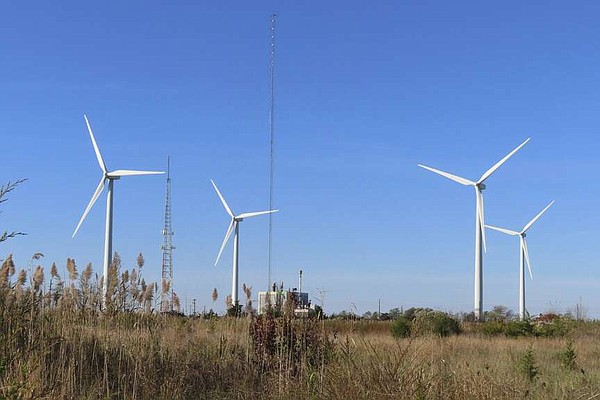Maine
‘It’s a disappointment’: Maine farmers say after farmworker minimum wage vetoed

WESTBROOK, Maine (WMTW) – Maine farmers are reacting to Gov. Janet Mills’ decision to veto her own bill that would have set a minimum wage for farm workers.
Mills said she supports a minimum wage for farm workers, but she said lawmakers made changes to the bill and she couldn’t go along with it.
The bill that was vetoed would have set the wage for farm workers at $14.15 per hour.
In Westbrook, Smiling Hill Farm co-owner Michael Knight said the bill that was vetoed is a regional issue.
Knight said farms in southern Maine could never get away with hiring someone and paying just the minimum wage. He said he has to offer wages to his more than 40 employees who are competitive in this market.
“I’m competing against Starbucks. I’m competing against Dunkin Donuts,” Knight said.
“Those people are upwards of $17 to $18 an hour, and that’s where I have to be in order to employ people here on the farm. Whether they are milking cows, or bailing hay, or making ice cream or bottling milk, it’s where it has to be, so really this area doesn’t mean anything,” Knight said.
Mills said she strongly supports a minimum wage for farmworkers, but said lawmakers made too many changes to her original proposal, including allowing farmers to face private lawsuits for labor violations instead of leaving it to the Department of Labor.
Knight said the bill that was vetoed would have had an impact mostly on farms in Downeast Maine and farms in northern counties.
Wednesday at the bi-weekly Farmers’ Market in Portland’s Deering Oaks Park, farmers weighed in on the issue.
Jan Goranson of Goranson’s Farm in Dresden said they have about 15 employees on her farm. The farm is in mid-coast Maine. She said they, too, offer salaries above minimum wage so they can attract good employees.
“I think it’s a disappointment that it was vetoed. There are some farmers that complain they can’t find any workers, but if you can’t offer a worker a decent wage, then, in fact, you are not going to find workers to work on your farm,” Goranson said.
At Smiling Hill Farm, Knight said he is in a much better position than his farmer friends in other parts of the state, who can pay high school kids to harvest for a few hours here and there.
Knight said that if those farm owners had to pay $14 to $15 an hour, that would have a very real negative impact on their bottom line.
Copyright 2024 WABI. All rights reserved.

Maine
University of Maine Presque Isle graduates largest class in institute history

PRESQUE ISLE, Maine (WABI) – University of Maine Presque Isle’s 115th graduation ceremony was held Saturday.
513 students graduated from the university, the largest-ever graduating class in the institute’s history.
Nationally-acclaimed author Cathie Pelletier was this year’s commencement speaker.
During the graduation event, Pelletier and former Maine State Representative, and UMPI alumnus, David McCrea were presented with Honorary Doctor of Humane Letters Degrees.
UMPI President Raymond Rice awarded degrees.
After the ceremony, the graduates were given a Star Wars themed surprise in honor of May 4.
Copyright 2024 WABI. All rights reserved.
Maine
Maine Nordiques beat Maryland Black Bears in first game – The Rink Live

The Maine Nordiques lead the series against the Maryland Black Bears, after a 2-0 win on the road in game one.
The first period was scoreless, and in the middle of the second period, the Nordiques took the lead when Ryan Panico scored the first goal.
Cole Hipkin
increased the lead to 2-0 halfway through the third period.
Next up:
The teams play each other again for Game 2 on Saturday at 5:30 p.m. CST at Piney Orchard Ice Arena.
Automated articles produced by United Robots on behalf of The Rink Live.
Maine
Maine’s aging wastewater facilities adjust to meet new challenges

Gravity is a friend of wastewater treatment plants, which is why the facilities are typically placed at low elevations, often along Maine’s extensive coastline.
Placing them in low-lying areas makes it easy to collect wastewater from uphill sinks and toilets. And placing them near waterways makes it easy to discharge filtered and disinfected water, or effluent, back into our rivers, reservoirs and harbors.
Many wastewater facilities in Maine and across the country were built after the Clean Water Act passed in 1972, meaning some are now 50 years old. They need upgrades not only given their age, but because of threats posed by climate change. Coastal facilities now see regular flooding during storms and high tides.
“Floodwaters can damage or destroy pumps, blowers and electronics kept in basements,” said Robert Lalli, the Wiscasset wastewater treatment plant superintendent. “And if salt water gets into sewage aeration tanks, it can disrupt the microbiology necessary to break down sewage and other hazardous compounds. Untreated sewage can then overflow into waterways, harming wildlife and those who fish for a living.”
It can also put Maine’s sources of drinking water at risk.
With the help of $40 million in federal funding, Maine communities are finding new ways to deal with threats to their wastewater plants.
The most common approach is to elevate tanks and buildings, and make other structural improvements that protect facilities from sea-level rise. This is happening all along the state’s coastline, from Kittery to Eastport.
In Machias, for example, a new pump station will keep the plant operating during heavy rains, which will help prevent sewage overflows like those that caused clam flat closures on the Machias River.
“More and more intense storms are working against us,” said Mike Riley, the combined sewer overflow abatement coordinator at the state Department of Environmental Protection. “But the new pump station, which will hopefully be up and running by the end of this year, will significantly reduce, if not prevent, overflows.”
The nearly $3.6 million project was paid for largely through a DEP grant.
Machias also plans to add a combination of seawalls (vertical or near-vertical walls) and berms (raised and sloping banks), which will protect the facility and downtown streets while creating a scenic river walk. This project is in the designing and permitting phase, said Dr. Tora Johnson, who runs a GIS Lab at the Machias-based Sunrise County Economic Council.
Portland, meanwhile, is installing four underground tanks that will hold millions of gallons of stormwater and wastewater, and keep its facility from backing up — and sending untreated wastewater into the nearby tidal basin, Back Cove.
“This pollution-control effort has been in the works for some time,” said Bill Boornazian, Portland’s water resources manager. “But the need is growing due to sea-level rise and regular flooding.”
“The biggest climate change challenge we have is intense rain events in the winter when the ground is frozen,” Boornazian added. They make the ground “like asphalt,” he said, noting that the new tanks will improve drainage and reduce flooding of city streets.
Portland is scheduled to start using the new tanks in December, said Brad Roland, a senior project engineer with the city’s Department of Public Works. He said the project, which began before the pandemic, will cost around $42 million.
The Ogunquit Sewer District plant sits on a long, sandy peninsula between the Ogunquit River and the ocean. At this picturesque and vulnerable spot, a second story is being added to a garage for increased office space, and the existing tank walls will be made taller, according to Philip Pickering, the sewer district superintendent. The electrical equipment and generator at a nearby pumping station will also be elevated.
But it’s only a temporary fix. A 2012 study found there was “no practical solution” that would allow the site to host a wastewater treatment plant beyond 2052 because of the “elevated risk from sea-level rise, flooding and shoreline erosion.”
Ogunquit is raising funds to relocate the facility about two miles west of its current location. The move, likely to occur between 2040 and 2055, is estimated to cost $30 million.
Facing a similar dilemma, Wiscasset officials hope to move the town’s facility as soon as a suitable site is found. The current location on the Sheepscot River is “the lowest point in Wiscasset,” said Lalli.
“We’ve had salt water come through our gates and into our tanks,” he said. “A seawall is impractical. If we moved up just three or four blocks, we’d be fine.”
If officials find a site close to the current location, it will cost around $35 million. If the new site is farther away and requires additional pipe laying and pumping stations, Lalli said, the cost could rise to at least $45 million.
Lynda DeWitt
Longtime editor and writer Lynda DeWitt has written about natural history for many organizations, including the National Geographic Society, Discovery Communications, Scholastic Productions, and Smithsonian’s National Academies of Sciences. She is the author of “What Will the Weather Be?” and splits her time between Maine and Maryland.
-

 News1 week ago
News1 week agoFirst cargo ship passes through new channel since Baltimore bridge collapse
-

 World1 week ago
World1 week agoHaiti Prime Minister Ariel Henry resigns, transitional council takes power
-

 World1 week ago
World1 week agoSpanish PM Pedro Sanchez suspends public duties to 'reflect'
-

 News1 week ago
News1 week agoAmerican Airlines passenger alleges discrimination over use of first-class restroom
-

 Movie Reviews1 week ago
Movie Reviews1 week agoAbigail Movie Review: When pirouettes turn perilous
-

 World1 week ago
World1 week agoEU Parliament leaders recall term's highs and lows at last sitting
-

 Science1 week ago
Science1 week agoMosquito season is upon us. So why are Southern California officials releasing more of them?
-

 Movie Reviews1 week ago
Movie Reviews1 week agoCity Hunter (2024) – Movie Review | Japanese Netflix genre-mix Heaven of Horror














